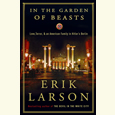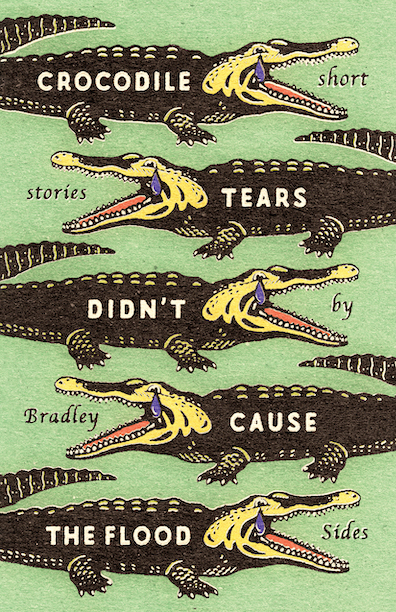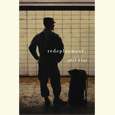What We See Transforms Us
Essayists explore what can’t be unseen in Don’t Look Now
In a 1998 experiment conducted by the Weizmann Institute of Science in Israel, researchers working in quantum theory concluded that the simple act of observing a beam of electrons changes them. Conversely, what we see changes us — the synergy between seer and seen shaping our world even as we move through it. This second premise is the theme of Don’t Look Now: Things We Wish We Hadn’t Seen, a collection of essays edited by Kristen Iversen and David Lazar. All explore images the authors didn’t plan to look at. They did look, of course, and were transformed. As Lazar writes in the preface, “The seen can’t be unseen.”

This may sound abstract or, to use a word from Nicholas Delbanco’s back-cover blurb, “scarifying.” (My first thought was watching Linda Blair’s head spin in the 1973 film The Exorcist, from which I have never quite recovered.) But these essays are more subtle and varied than that. In “Can You Tell Me What You Saw?” Lee Martin remembers inadvertently watching his mother pray. Yalie Kamara’s “Home” recalls the author’s experience of looking into the eyes of a mourning dove that had, like her, made a place for itself in her new apartment. Xu Xi’s “But for the Grace” takes us to Hong Kong in what she calls her “terrible twenties,” when she came to terms with various meanings of human nakedness. Iversen’s own essay, “Love and Death in Mexico,” is about seeing a bullfight. Lazar writes about the relationship between dreams and memory.
That said, some essays do ask us to look, with the authors, at what is horrific. Amelia Maria de la Luz Montes’ “Trigger Warnings” recalls her father’s suicide as she stood nearby. In “Wars,” Jerald Walker recounts a public reading for a group of veterans who resisted hearing the words of a non-soldier. Walker joined them in the writing prompt, recalling a childhood experience in which he saw a neighbor just back from Vietnam react indifferently when a ferocious dog tore into him — a source of unexpected empathy.
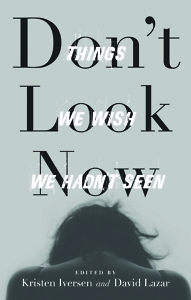 A recurring theme is how childhood images have molded the way the authors see life as adults. Paul Crenshaw’s “Morgue,” for example, takes us into a pre-World War I tuberculosis sanitorium, long closed, where the author and his childhood mates went looking for ghosts in the early 1980s. Instead, they discovered both the morgue and a bomb shelter, which made the Cold War seem real. The experience shaped Crenshaw’s understanding of global politics and his role as a father. In “Fire,” Alyce Miller remembers a beloved dog killed in a house fire when she was 5. “What was impressionistic then would yield a sharper focus over time,” she writes, “as understanding evolved, and the weight of the losses joined subsequent ones in my life.”
A recurring theme is how childhood images have molded the way the authors see life as adults. Paul Crenshaw’s “Morgue,” for example, takes us into a pre-World War I tuberculosis sanitorium, long closed, where the author and his childhood mates went looking for ghosts in the early 1980s. Instead, they discovered both the morgue and a bomb shelter, which made the Cold War seem real. The experience shaped Crenshaw’s understanding of global politics and his role as a father. In “Fire,” Alyce Miller remembers a beloved dog killed in a house fire when she was 5. “What was impressionistic then would yield a sharper focus over time,” she writes, “as understanding evolved, and the weight of the losses joined subsequent ones in my life.”
One of the most poignant contributions is Mary Cappello’s “To Love Me, or the Intruder’s Tattoo,” in which Cappello discovers that her beloved student, a talented poet, had broken into an 80-year-old man’s home and that his death may have been suicide. Seeing his tattoos in the newspaper, Cappello wonders, “in what sense as his teacher I claimed the right to know or to see him,” though she had more right than “reporters and police who had the power to represent him.”
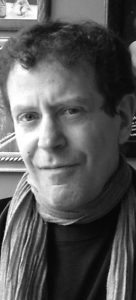
Some essays focus on experiences particular to women. Emily Heiden’s “Scenes from July 2013” is about what she saw and how she was seen when she sought help with an unplanned pregnancy. Sonya Huber’s “Those Were the Days” explores her experience as a young, penniless single mother who went to a mall to exchange a coupon for a free item and, appearing middle class, was called a liar by a predatory salesman. Things are not, the essay tells us, always as they appear.
Formerly director of the creative writing program at the University of Memphis, Iversen is now at the University of Cincinnati and serves as nonfiction editor of the Cincinnati Review. Lazar is a professor at Columbia College Chicago and founding editor of the literary journal Hotel Amerika. Both recall in the preface that the book is rooted in their own experience.
Lazar read Daphne du Maurier’s fictional Don’t Look Now 45 years ago and was struck by “the instability of point of view.” Iversen writes about her early inspiration in Paris bars and more recently in Taft’s Ale House, a Cincinnati bar where she and Lazar developed the idea for this collection. I wish they’d said more in the preface about how the conversation in that bar shaped the concept for the book. Still, Iversen’s point that stories “help us bear the fears and darkness we all face” is apt. “Life is not what we expect,” she writes. “And yet we endure.”

Jane Marcellus is a writer whose published work includes literary nonfiction, critical analysis, and journalism. Her work was listed as “Notable” in Best American Essays 2018, 2019, and 2020. She is a professor at Middle Tennessee State University.
